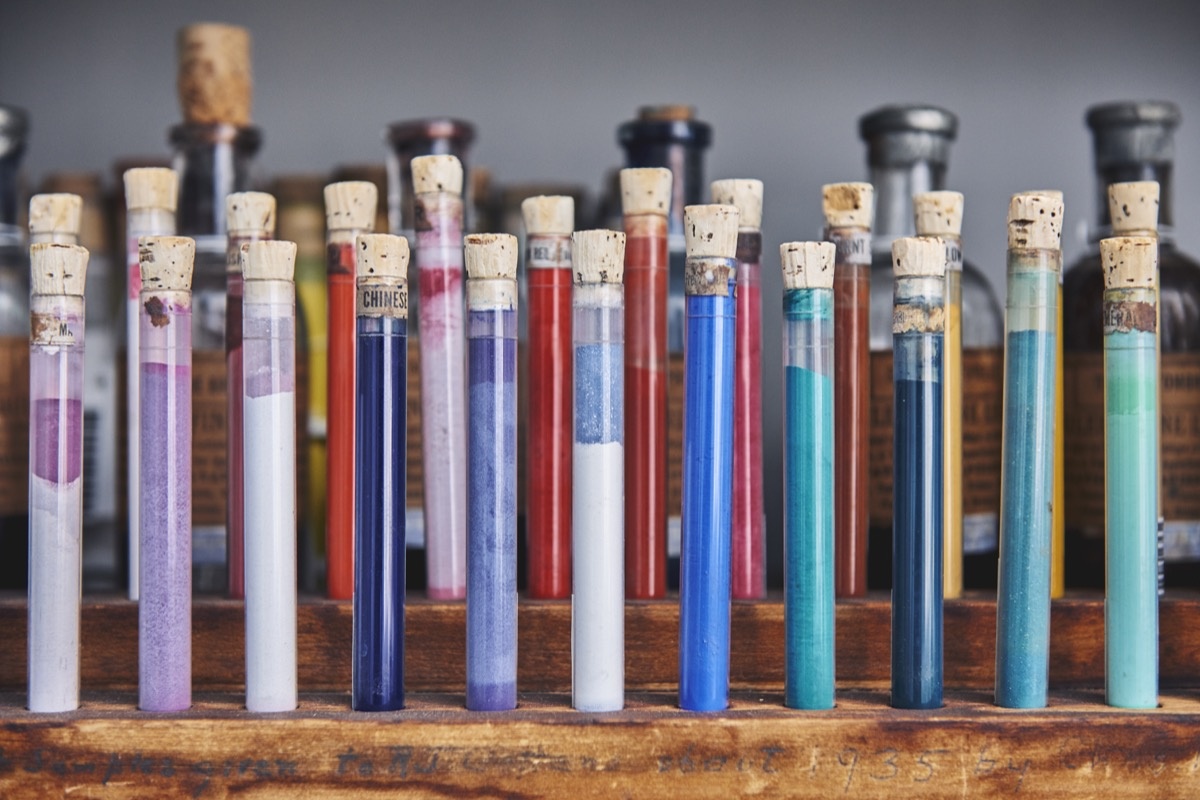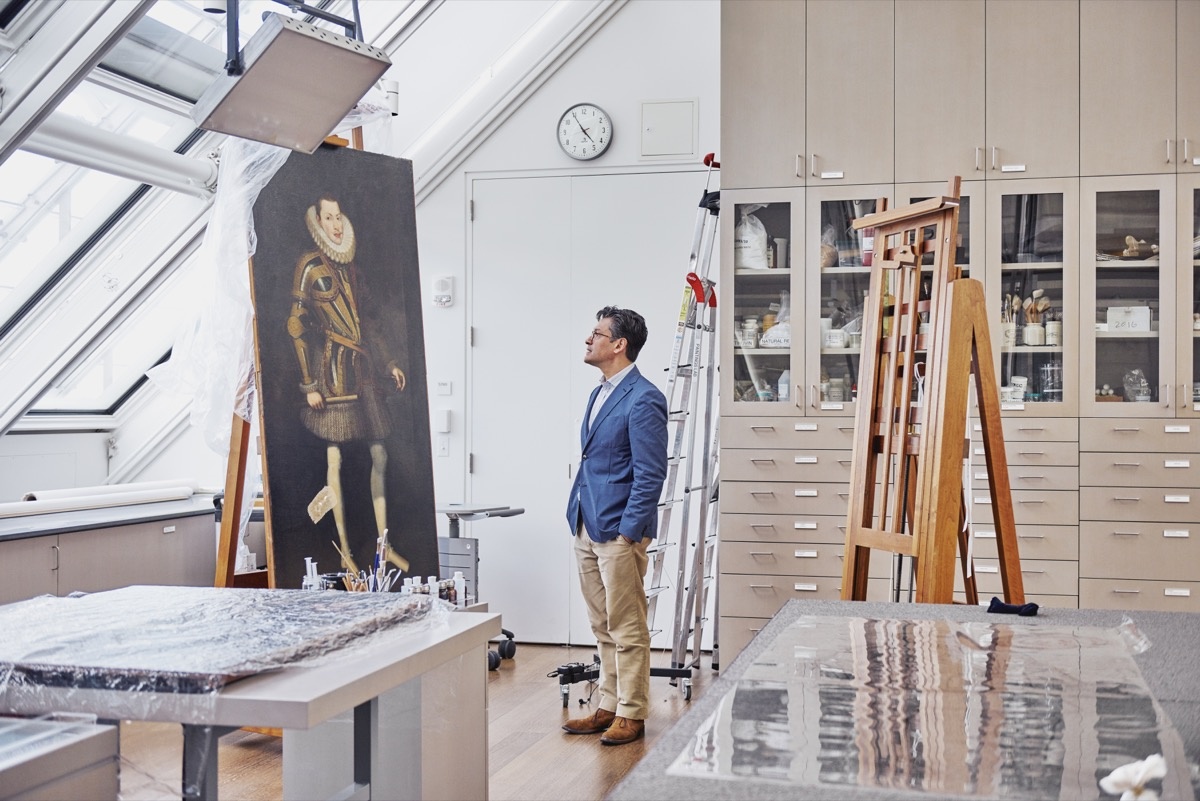The Library Of Rare Colors

The fifth floor of Harvard’s art museum contains rare pigments. Mummy Brown is a pigment produced by grinding up the flesh of Egyptian mummies. It appeared as early as the 16th century; production continued until the 1960s, when the supply of embalmed bodies finally petered out. While the historical record confirms that artists did purchase the paint, researchers have yet to find an artwork in which the pigment is definitively present. But a newly surfaced studio inventory for de la Cruz lists Mummy Brown among his supplies. If accurate, this portrait will be the first confirmed use of the pigment in a work of art.

Narayan Khandekar stands in front of a 17th-century Spanish painting that may contain Mummy Brown. Photo by Tony Luong for Artsy.
Mummy Brown is a pigment produced by grinding up the flesh of Egyptian mummies. It appeared as early as the 16th century; production continued until the 1960s, when the supply of embalmed bodies finally petered out. While the historical record confirms that artists did purchase the paint, Khandekar says researchers have yet to find an artwork in which the pigment is definitively present. But a newly surfaced studio inventory for de la Cruz lists Mummy Brown among his supplies. If accurate, this portrait will be the first confirmed use of the pigment in a work of art.
Alongside a few tubes of Mummy Brown are other pigments whose origin stories are practically legend. Tyrian purple, an ancient Phoenician dye that requires 10,000 mollusks to produce a single gram of pigment. Ultramarine, a vivid blue made from lapis lazuli mined in Afghanistan, was once more precious than gold.

The Gettens Cabinet at Harvard’s Straus Center for Conservation and Technical Studies. Photo by Tony Luong for Artsy
Forbes, the grandson of poet Ralph Waldo Emerson, graduated from Harvard in 1895. He set sail for Europe to experience firsthand the great classical, medieval, and Renaissance works he’d learned about in class. He started to acquire art, loaning (and eventually donating) his collection to Harvard’s newly-founded Fogg Museum.

Photo by Tony Luong for Artsy.

Pigments collected by Edward Forbes during a 1932
